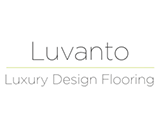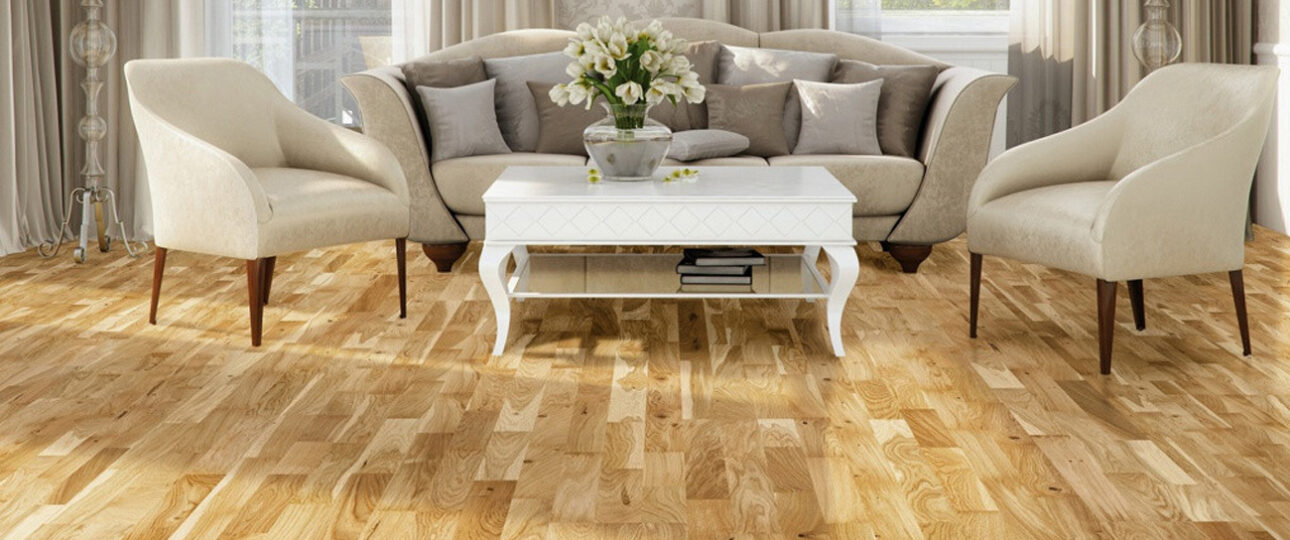Engineered wood flooring is a versatile and durable alternative to traditional solid hardwood flooring. It is made up of multiple layers of wood that are bonded together using high-quality plywood or strand board. The top layer, also known as the wear layer, is a thin veneer of real wood, providing the authentic look and feel of hardwood. Engineered wood flooring offers a wide range of colours and styles, making it suitable for any design aesthetic. It is designed to withstand the rigours of daily use and is more resistant to water damage than solid wood floors. With its ease of installation, engineered wood flooring is becoming a popular choice for homeowners and professionals alike. From its construction to its installation options, this type of flooring offers several advantages over other flooring materials.
Benefits of Engineered Wood Flooring
Engineered wood flooring offers a range of benefits that make it a popular choice for homeowners and businesses alike. One of the main advantages of engineered wood flooring is its affordability. Compared to solid hardwood flooring, engineered wood is often more budget-friendly, making it a cost-effective option for those looking to enhance their space without breaking the bank.
Engineered wood flooring is also known for its easy maintenance. With regular sweeping and occasional mopping, engineered wood floors can retain their beauty and durability for years. Additionally, engineered wood flooring is quick to install, thanks to its click-lock or tongue-and-groove installation systems, allowing for a hassle-free and customisable process.
When choosing engineered wood flooring, it’s essential to consider factors such as wear layer thickness, hardness, core thickness, and the number of finish coats. The wear layer thickness determines the longevity of the flooring, while hardness affects its resistance to scratches and dents. A thicker core enhances the stability and durability of the boards, while multiple finish coats provide additional protection against wear and tear.
In conclusion, engineered wood flooring offers affordability, moisture resistance, easy maintenance, and quick installation. By considering crucial factors like wear layer thickness, hardness, core thickness, and finish coats, individuals can ensure they choose high-quality engineered wood flooring that meets their specific needs and preferences.
Types of Engineered Wood Flooring
Engineered wood flooring comes in a variety of types, each offering distinct characteristics and benefits. One common type is the veneer layer engineered wood flooring. This type features a thin layer of real wood, known as the veneer layer, which is bonded to a plywood or high-quality plywood core. Veneer layer engineered wood flooring provides the authentic look and feel of hardwood while offering enhanced stability and durability. Another type is the strand board core engineered wood flooring. This type features a core made of strand boards, which are highly compressed wood fibres. Strand board core engineered wood flooring is known for its exceptional strength and durability, making it a popular choice for high-traffic areas. Finally, there is the HDF (High-Density Fiberboard) core-engineered wood flooring. This type features a core made of HDF, which is a dense and strong type of fiberboard. HDF core-engineered wood flooring is known for its superior stability and resistance to moisture. With these different types available, homeowners can choose the engineered wood flooring that best suits their preferences and needs.
Wear Layer
The wear layer is an essential component of engineered wood flooring, contributing to its durability and quality. This layer is part of the real wood veneer that is applied to the top of the engineered flooring. The wear layer is typically made from a high-quality hardwood species like oak or maple.
For the wear layer to be effective, it should be at least 3mm thick. This thickness allows for the option of refinishing the flooring if necessary, ensuring its longevity and maintaining its beauty over time. The wear layer acts as a protective shield, guarding against daily wear and tear, such as foot traffic and furniture movement.
To ensure optimum durability, it is recommended that the wear layer be within the thickness range of 3mm to 5mm. This range allows for sufficient protection while still maintaining the natural aesthetics of the wood. Choosing a wear layer within this range adds to the overall value and quality of the engineered wood flooring.
By considering the wear layer thickness when selecting engineered wood flooring, homeowners can invest in a long-lasting, high-quality product that enhances the beauty of their space while providing years of enjoyment.
Plywood Construction
Engineered wood flooring utilises a plywood construction, which consists of multiple layers of wood pressed together to create a strong and durable flooring material. This construction technique offers several benefits that make engineered wood flooring a popular choice among homeowners.
The plywood core in engineered wood flooring typically consists of 5 to 7 layers of wood positioned in a crisscrossed pattern. This arrangement enhances the stability and durability of the flooring, reducing the likelihood of warping or bowing. The layers of wood are bonded with adhesive, creating a solid core that can withstand heavy foot traffic and furniture movement.
When it comes to choosing the right engineered wood flooring, the thickness of both the veneer and the core is important. A recommended veneer thickness of at least 4mm ensures that the flooring can be refinished if necessary, prolonging its lifespan. Additionally, a 9-ply or 11-ply core thickness provides added stability and durability.
The overall thickness of the engineered wood flooring is also a crucial factor to consider. A thicker flooring material, typically ranging from 14mm to 20mm, offers greater stability and can better withstand the wear and tear of daily use.
In summary, the plywood construction used in engineered wood flooring enhances its stability and durability. With a solid core, this type of flooring can resist warping and bowing, providing a long-lasting and reliable option for homeowners. By ensuring the appropriate veneer and core thickness, as well as overall thickness, homeowners can enjoy the beauty and functionality of engineered wood flooring for years to come.
Installation Methods for Engineered Wood Flooring
Floating Floor Installation Method: This method is recommended for low-traffic residential areas. It requires no power tools, making it a popular choice among DIY enthusiasts. The engineered wood flooring is locked together using a tongue and groove system, creating a floating floor that is not attached to the subfloor. Underlayment is placed beneath the flooring to reduce noise and provide cushioning. The ease of installation and the ability to easily replace damaged planks are key benefits of this method.
Natural Wood Veneer
Natural wood veneer is an integral component used in the construction of engineered wood flooring. It serves as the top layer of the flooring, providing its authentic hardwood appearance and feel. This veneer is obtained by slicing real wood logs, resulting in a thin layer of natural wood that showcases the unique grains and patterns inherent in the chosen hardwood species.
The use of natural wood veneer as the top layer of engineered wood flooring offers several advantages. Firstly, it provides the aesthetic appeal of solid hardwood floors, allowing homeowners to enjoy the beauty and warmth of real wood. Secondly, the veneer layer adds durability and strength to the flooring, making it resistant to wear and tear, especially in high-traffic areas.
To ensure a strong and permanent bond between the natural wood veneer and the core construction of the flooring, a meticulous bonding process is employed. The veneer layer is infused with adhesive and then pressed firmly onto a high-quality plywood or strand board core. This bonding process ensures that the veneer remains securely attached to the core, preventing any issues such as peeling or warping.
Overall, the incorporation of natural wood veneer into engineered wood flooring enhances its visual appeal, durability, and performance. This combination of authentic hardwood beauty and advanced engineering makes engineered wood flooring a popular choice for homeowners seeking the perfect balance between elegance and practicality.
Range of Colours and Finishes Available
Engineered wood flooring offers a wide range of colours and finishes, allowing homeowners to find the perfect style to complement their interior design. The versatility of engineered wood means that it can be customised to achieve various looks and effects.
One way that engineered wood flooring achieves different colours and finishes is through pre-finishing techniques. These techniques include smoking, sawing, brushing, and planning, which can give the wood a distressed, rustic, or textured appearance. Additionally, stains and oils can be applied to enhance the natural colour of the wood or provide a different shade altogether.
In terms of wood species, engineered wood flooring commonly uses oak, hickory, red oak, maple, and walnut. Each of these species offers its unique characteristics and colours, allowing homeowners to select a flooring option that matches their taste and style.
Furthermore, most engineered wood flooring comes pre-finished, providing a greater aesthetic choice. This means that the flooring already has its final colour and finish applied at the factory, saving homeowners the time and effort of having to finish the floors themselves.
With the wide range of colours, finishes, pre-finishing techniques, and wood species available in engineered wood flooring, homeowners have plenty of options to create the perfect look for their space.
Advantages of Engineered Wood Flooring
Engineered wood flooring offers several advantages over other types of flooring options. Firstly, its layered construction makes it more resistant to moisture and temperature fluctuations, making it suitable for installation in areas prone to high humidity or climate change. This makes engineered wood flooring a great choice for basements, kitchens, and bathrooms, where traditional solid hardwood floors may be susceptible to warping or damage. Additionally, engineered wood flooring is known for its durability and stability, thanks to its unique construction. The multiple layers of wood and resin make the flooring less likely to shrink or expand, reducing the risk of gaps or buckling. Another advantage of engineered wood flooring is its wide range of styles and finishes. With various wood species, colours, and textures available, homeowners can easily find a flooring option that complements their interior design and personal preferences. Lastly, engineered wood flooring is often more cost-effective compared to solid hardwood floors, offering a similar aesthetic at a lower price point. With its resilience, versatility, and affordability, engineered wood flooring remains a popular choice for homeowners looking to enhance their spaces with the beauty and warmth of wood.
Durability and Strength
Engineered wood flooring is known for its exceptional durability and strength, making it a popular choice among homeowners. Compared to other types of flooring, such as laminate or vinyl, engineered wood flooring offers superior resilience and longevity.
One of the key advantages of engineered wood flooring is its ability to be sanded and refinished. This means that if the floor starts to show signs of wear and tear, it can be restored to its original beauty. The number of times it can be refinished depends on the thickness of the veneer layer. Thicker veneer layers allow for multiple refinishing, ensuring the longevity of the floor.
In terms of durability and maintenance, engineered wood flooring has a range of significant benefits. It is less susceptible to water damage compared to solid wood flooring, making it suitable for areas prone to moisture, such as kitchens or bathrooms. Additionally, engineered wood flooring is more resistant to warping and shrinking, thanks to its layered construction.
To enhance its durability, engineered wood flooring often comes with a hard, factory-applied finish. This finish provides an additional layer of protection against scratches, stains, and daily wear and tear, making it suitable for high-traffic areas.
Overall, engineered wood flooring is a durable and strong choice for homeowners seeking a beautiful and long-lasting flooring option. Its ability to be sanded and refinished, along with its resistance to water damage and enhanced durability, make it an excellent investment for any home.
Ease of Installation
One of the major advantages of engineered wood flooring is its ease of installation. Unlike solid hardwood flooring, which often requires the labour-intensive nail-down method, engineered wood flooring offers options like click-lock and glue-down installation methods. These installation methods make it much easier and more manageable, particularly for DIYers.
The click-lock installation method involves interlocking the planks together, creating a secure and seamless installation. It eliminates the need for nails or adhesives, making the process quicker and more straightforward. With click-lock, each plank simply clicks into place, resulting in a sturdy and durable floor.
Similarly, the glue-down method involves applying adhesive to the subfloor and then laying the engineered wood flooring planks on top. This method provides a strong bond that ensures the flooring remains secure in place for years to come.
Compared to the nail-down installation required for solid hardwood floors, where nails are driven into the subfloor and through the planks, the click-lock and glue-down methods for engineered wood flooring are considerably easier and less time-consuming.
Whether you’re a professional installer or a DIY enthusiast, the ease of installation of engineered wood flooring makes it a popular choice. It allows for a hassle-free and efficient process, ultimately saving time and effort while still achieving a beautiful and long-lasting hardwood floor.
Water Resistance and Damage Prevention
Water resistance is a crucial feature of engineered wood flooring that plays a significant role in its durability and longevity. Engineered wood floors have a higher resistance to moisture compared to solid wood floors, making them more suitable for areas prone to humidity and potential water exposure.
When engineered wood flooring gets wet, it can cause significant damage, such as warping, cupping, or swelling. Excessive moisture can penetrate the wood layers, leading to the expansion and contraction of the planks. This can result in uneven surfaces, squeaks, and even structural issues in extreme cases.
To protect engineered wood flooring from water damage, several preventive measures can be taken. Firstly, it is essential to promptly clean up any spills or moisture on the floor to prevent them from seeping into the wood layers. Using doormats at entrances and rugs in high-traffic areas can help trap dirt and water, reducing the risk of damage. It is also advisable to avoid using harsh cleaners or steam mops, as they can potentially cause water damage.
In wet locations such as bathrooms or basements, it is recommended to use engineered wood flooring specifically designed for these areas, which have enhanced water resistance properties. Additionally, maintaining proper humidity levels in the surrounding environment can help prevent moisture-related issues.
In summary, the water resistance of engineered wood flooring is vital in protecting it from potential damage caused by moisture. By following preventive measures, such as prompt cleaning, using mats and rugs, and selecting appropriate flooring for wet areas, homeowners can ensure the longevity and durability of their engineered wood floors.
Variety of Species Available
Engineered wood flooring offers a vast variety of species, allowing homeowners to achieve their desired aesthetic and design preferences. Traditional hardwood species such as Oak, Maple, and Hickory are commonly available in engineered wood options. Oak, known for its durability and timeless appeal, is a popular choice among homeowners. Maple, with its light and consistent grain patterns, adds a bright and modern look to any space. Hickory, renowned for its strength and resilience, brings a rustic charm to interiors.
In addition to traditional hardwood species, engineered wood flooring also offers options for exotic species. These unique choices include species like Brazilian Cherry, Acacia, and Tigerwood, which showcase vibrant colours and striking grain patterns. Exotic species provide a distinct and eye-catching look to any room, making a bold statement in interior design.
Furthermore, engineered wood flooring opens up design possibilities that are not available with solid hardwood floors. Speciality textures, such as wire-brushed or hand-scraped finishes, add depth and character to the surface. Surface treatments like distressing or antiquing create an aged and weathered appearance, perfect for achieving a vintage or farmhouse style. Designers can also explore a range of colour effects, from rich and dark stains to light and whitewashed finishes. Additionally, extra-wide planks, often exceeding traditional solid wood widths, create a modern and spacious feel in any space.
With the wide variety of species and design options available, engineered wood flooring allows homeowners to personalise their floors, reflecting their unique style and adding value to their spaces.
Disadvantages of Engineered Wood Flooring
Engineered wood flooring offers many advantages, but it is important to consider the potential disadvantages as well. One disadvantage is that engineered wood flooring typically cannot be refinished as many times as solid wood floors. The wear layer, which is the top part of the flooring that is made of real wood, can only be sanded down a limited number of times before it becomes too thin. This means that over time, the engineered wood may show signs of wear and damage that cannot be easily repaired. Additionally, while engineered wood flooring is more resistant to moisture compared to solid wood, it is not completely waterproof. Excessive exposure to water can still cause damage, so it is important to promptly clean up spills and avoid installing engineered wood in areas prone to moisture, such as bathrooms or basements. Finally, the installation of engineered wood flooring can be more complex compared to other flooring options. While some engineered wood can be installed as a floating floor, others require glue or nails for a secure and stable installation. It is recommended to hire a professional to ensure correct installation and minimise any potential problems. Despite these disadvantages, engineered wood flooring remains a popular and versatile choice for homeowners seeking the beauty and warmth of real wood floors.
Cost Compared to Solid Hardwood Floors
When it comes to cost, engineered wood flooring is usually a more budget-friendly option compared to solid hardwood floors. The price range for engineered hardwood typically starts at around £28.50 per square metre and can go up to around £60 per square metre. On the other hand, solid hardwood floors tend to have a higher average price range of £50 to £120 per square metre.
Several factors contribute to the cost variation between these two types of flooring. Firstly, the type of wood species used plays a significant role. Exotic or rare wood species are generally more expensive, whether in engineered or solid form. Secondly, the finishes applied to the flooring can impact the price. High-quality finishes can add to the overall cost. Lastly, the installation method also influences the pricing. Solid hardwood floors often require professional installation, which can come with an additional cost.
In summary, if cost is a primary consideration, engineered wood flooring offers a more affordable option compared to solid hardwood floors. However, it’s important to consider all factors, such as the desired wood species, finishes, and installation method, to determine the exact cost for your specific project.
Jamie Hall, the driving force behind Flooring King's website as Director, leads a revolution in the flooring industry. With vast experience and unwavering dedication, Jamie transforms conventional practices. He pioneers advanced technologies to ensure client satisfaction and continually raises industry standards.












